When a Gymnodoris loses its spots
 March 3, 2019
March 3, 2019
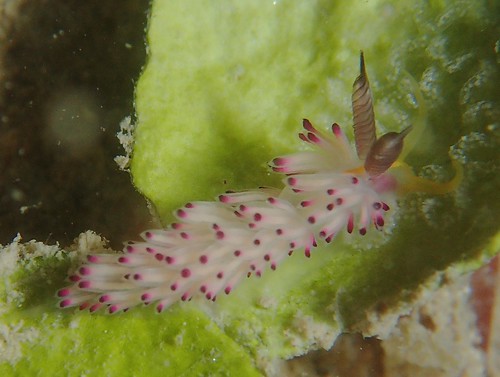
Toh Chay Hoon is a veteran of Singapore waters, and is crazy about nudibranchs. She recently visited the fringing reefs of Pulau Hantu Besar (Big island), “Had two good dives on Sunday! Visibility was about 2m.” She exclaims enthusiastically. Above: Favorinus sp. on calcareous algae. All photos (C) Toh Chay Hoon, 2019.
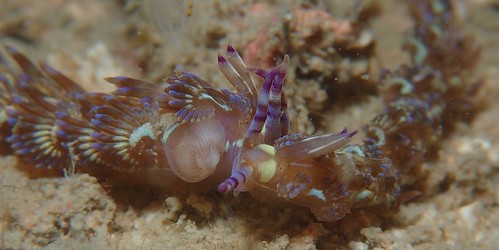
She encountered this pair of Pteraeolidia semperi engaged in the act of mating! These sea slugs are found throughout the tropical and subtropical Indo-West Pacific. There are two species – P. semperi ( Widespread tropical Indo-Pacific) and P. ianthina ( Temperate eastern Australia), which are very similar. The key differences are that P. semperi has three or more purple bands on its oral tentacles, where P. ianthina only has two. Second, P. semperi typically has white vertical bars or spots on its dorsal and lateral body, while P. ianthina has none.
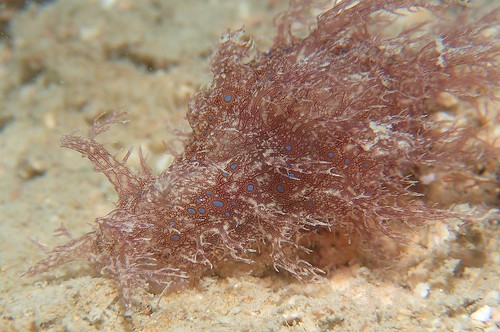
Bursatella leachii or Bushy sea hare. These guys eat cyanobacteria, in particular, the mat-forming Lyngbya majuscula, a filamentous blue-green alga. Although L. majuscula occurs naturally, blooms triggered by climate extremes or eutrophication have impacted human health and the environment. Fish tend to avoid areas affected by L. majuscula and prefer to inhabit waters that are not affected. This may reduce the available catch for the fishing industry and recreational fishermen.
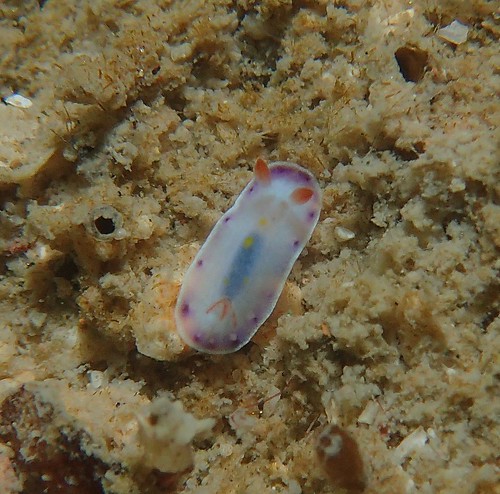
A beauitufully coloured, but unknown species of Hypselodoris.

“Saw a black Gymnodoris nudibranch which was a bit different from the ones I had seen at intertidal (above)….

…This one has no yellow dots! Could it be G. nigricolor?”

Chay Hoon also had a new sighting of an Eubranchus nudibranch! Many of the species from this genus of nudibranchs remain undescribed by science.
These sea slugs are sometimes referred to as candelabra nudibranchs because their cerrata are reminiscent of candle holders! However, divers at Pulau Hantu are more lilely to exclaim like Chay Hoon, “It looks like part of the Hydroids!”
Take a peek into Chay Hoon’s dive by browsing our gallery below!

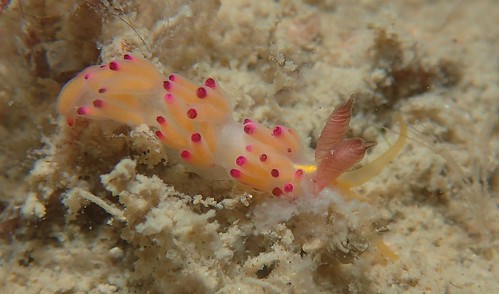
 Posted in
Posted in 



 content rss
content rss
COMMENTS